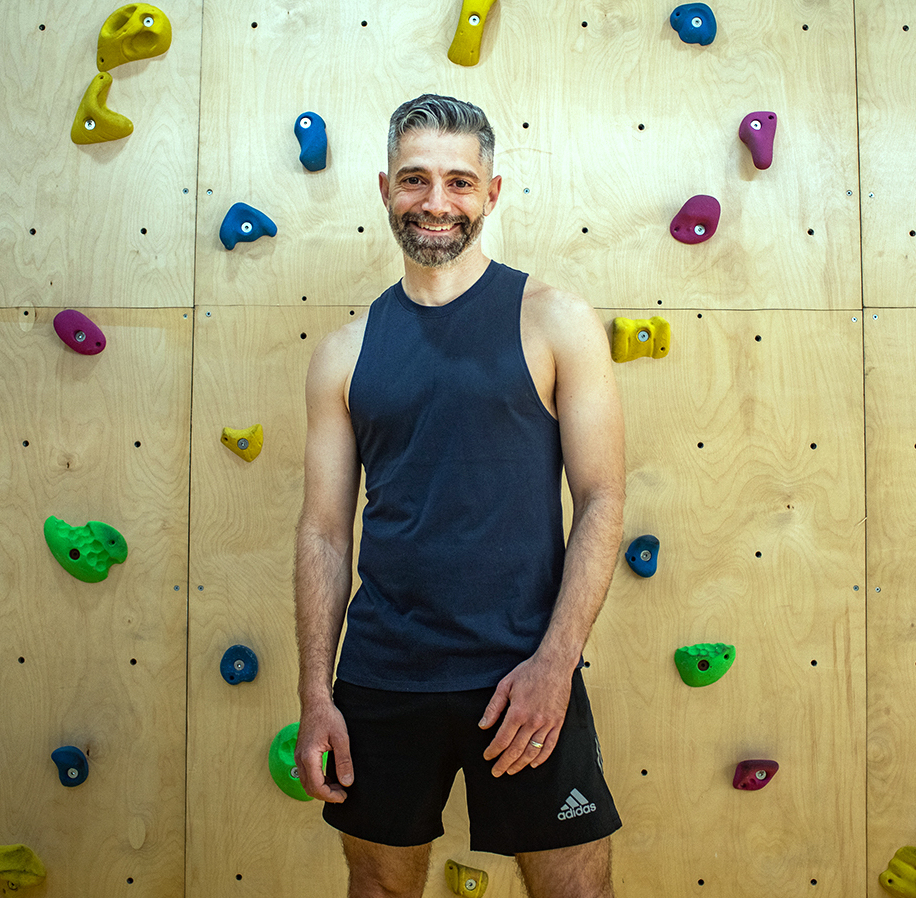How to Find a Healthy Balance in Life

Bang!
The starting gun goes off as you begin a marathon that starts right now and ends when you die, literally. You feel strong and motivated to begin, sprinting forward to get ahead of the pack, and smiling as you hear your friends and family cheering you on. You see the sun breaking over the horizon, feel the cool breeze on your face, and can sense that your muscles are fresh and ready for the long haul. The first couple of miles (or kilometers) fly by with ease as you look at your watch and are amazed by the world-record pace you are setting.
And then a few clouds appear drizzling rain onto the pavement, making each step a little more slippery.
A few moments later, a headwind picks up and has you feeling as if you are running into a wall.
While trying to deal with these obstacles, your muscles start getting stiff, and you feel that pinch that warns you a cramp is coming.
To top things off, there is no one around anymore to cheer you on, causing you to feel demoralized and isolated. In your mind, there are two options: a) just quit and go home or b) stop being a baby and keep pushing because “everyone else is doing it”. But there is another option that many people don’t even consider: c) Take a break!

For some reason, whether it’s the ego to win at all costs, the fear of failure if we don’t win, or modern society’s obsession with results and image, many people don’t think they have the ability to remove themselves from the training or diet mentality because they think they will lose all the progress they made. The truth is that even if you are taking two steps forward followed by one step back, you are actually making progress moving ahead, albeit at a slower pace (Which is OK!).
In this post, I will focus more on how people tend to do too much in terms of their daily habits and routines with regard to their supposedly “healthy” lifestyle. I have placed the H word in quotations because this is the one area where I have changed my mind the most since becoming a Health and Fitness Coach in 2019. Most of my clients will start with a sprint and do things to the extreme like eating only salads or skipping meals, going to the gym 5–6 times a week regardless of fatigue, and feeling guilty when social responsibilities require them to go outside of their routine. Their entire life becomes dedicated to obtaining their health goals while things like family, friends, and social life take a back seat. Furthermore, they are typically miserable after a couple of months into the process thanks to an aching body, a lack of sleep, and an unnatural relationship with food. Thus, while the pursuit of a long, healthy life is honorable, the single-minded obsession with food and exercise teeters on the verge of addiction and can cause more harm than good.
We have a saying in Greece since ancient times, which has since gone around the world, “Παν μέτρον άριστον” (pan metron ariston) or “Everything in Moderation”.
Is it good to exercise? Of course, but muscles only grow when they are allowed to rest. If you are constantly sore, you won’t perform well enough to actually see the results you are chasing. Most of us grew up with the slogan “No Pain, No Gain,” but now science has demonstrated that if one feels pain, it is a sign of overtraining and fatigue of the Central Nervous System (CNS). Where it used to be thought that one must train to failure to optimize their outcome, research now shows that we can achieve the same results by leaving a few reps in reserve for the next set or workout. Obviously, one can still work out 5,6, or 7 times a week, but it isn’t necessary to freak out over a missed workout or just do some stretching or light cardio if the body just can’t follow what the ego wants to do.

Is it good to eat “healthy” foods? Certainly it is but to what extent? First off, even so-called healthy foods contain calories and can contribute to weight gain if eaten during a caloric surplus. On the other side of that same coin, unhealthy foods can also be consumed and lead to weight loss if they are part of a caloric deficit. I’ve created my “Have Your Cake and Eat It Too” method to allow my clients to occasionally eat small portions of their favorite sweets as a way to get the serotonin flowing and to break the monotony of our nutritional plan. However, some clients of mine have explicitly told me they prefer not to eat or drink certain items which act as a trigger for past behaviors, and I support their decision and applaud their honesty.
At the end of the day, you have to ask yourself why you are trying to make these lifestyle changes in the first place. Is the ultimate goal to have a six-pack or be super thin? Or is your goal as simple as wanting to be happy and live long enough to see your kids grow up to become adults? As a PE teacher, sports trainer, and fitness and nutrition coach, I am always trying to lead by example for my students and clients. I eat well most of the time, work out about 4–5 times a week, and aim for 7 hours of sleep every night. But I also like a small treat with my coffee in the afternoon, take a day off when I’m physically exhausted, and stay up late watching TV with my wife sometimes. And it’s all OK because it makes me happy, and I’m still on path to reach my goals, just maybe a little slower. Don’t forget: it’s a marathon and not a sprint.
**Note: This article is not referring to behaviors such as anorexia, bulimia, or compulsive exercising. If you believe you may be experiencing one of those pathologies, please contact a doctor or psychologist immediately.
Tom Mourikis is the founder of AZLO Coaching, a nutrition and exercise service with a focus on mindfulness, education, and accountability. He has degrees in Movement Sciences and Physical Education, as well as certifications as a Nutrition Coach (NASM) and a Strength and Conditioning Specialist (NSCA). After having previously lived in Chicago, Athens, and Guangzhou, Tom currently lives in Lima, Peru, with his wife and 2yo son.
